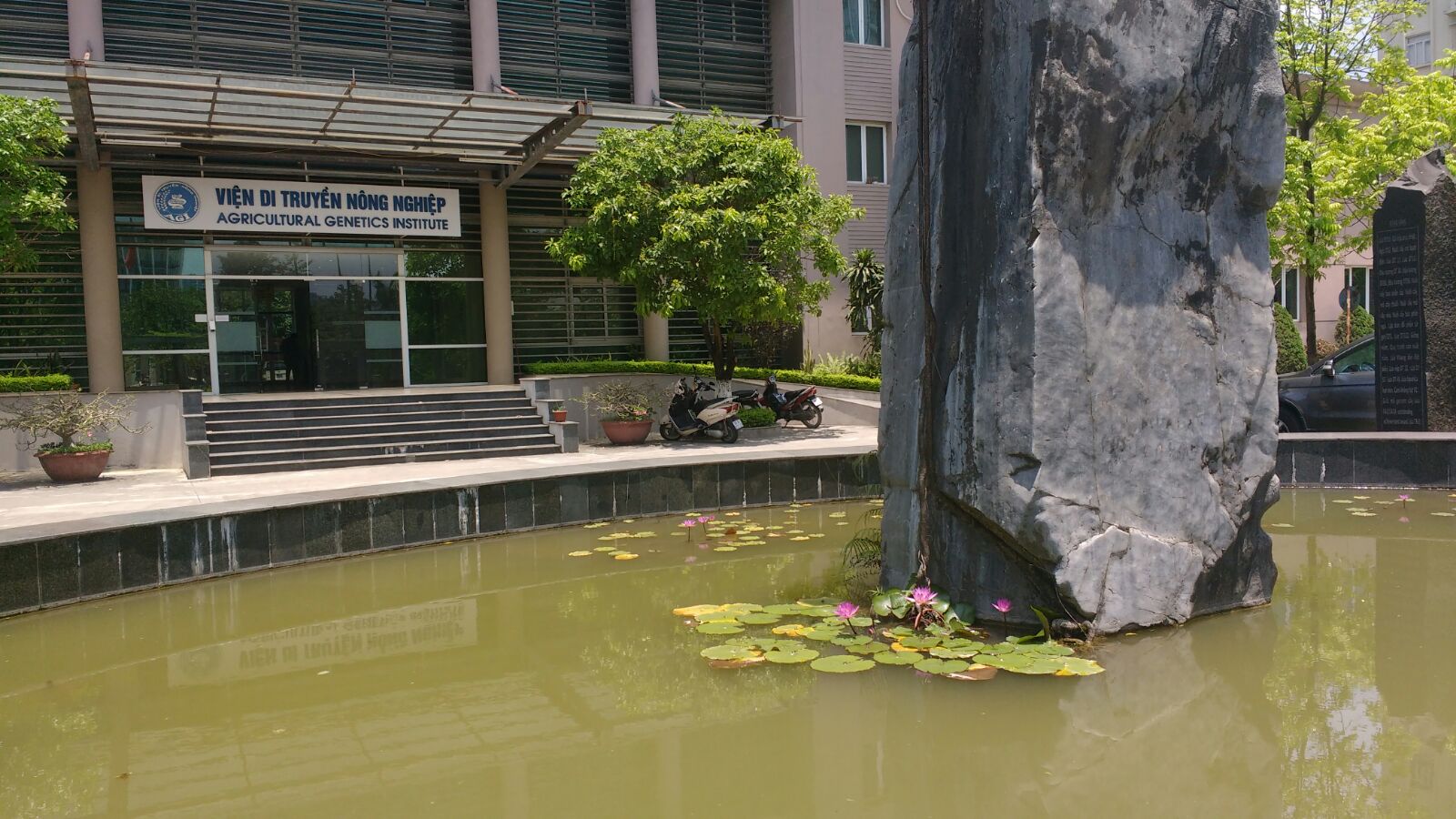
Starting to feel like I’m settling into the CIAT office and Hanoi life, now that I have a better idea of what I’ll be working on and where I’ll be staying for the three months. The apartment is a twenty-minute drive from the office, shorter than many of my previous commutes so I’m enjoying that while it lasts. Hanoi in rush hour can be unpredictable like in any city, but despite the heavy traffic during these times it seems traffic rarely comes to a complete standstill (even if it seems like it should!) and miraculously I haven’t been overly late anywhere…yet!
Below is a picture of the front of the building that the CIAT offices are in. CIAT occupy the first, second and ninth floors. There are other agricultural research institutes in the same building, including the International Rice Research Institute.

There are glasshouses on the grounds and although I haven’t been able to identify what is being grown in them, just outside I did notice some mango trees with some decent looking mangoes. Continue reading “Update from the CIAT office”

